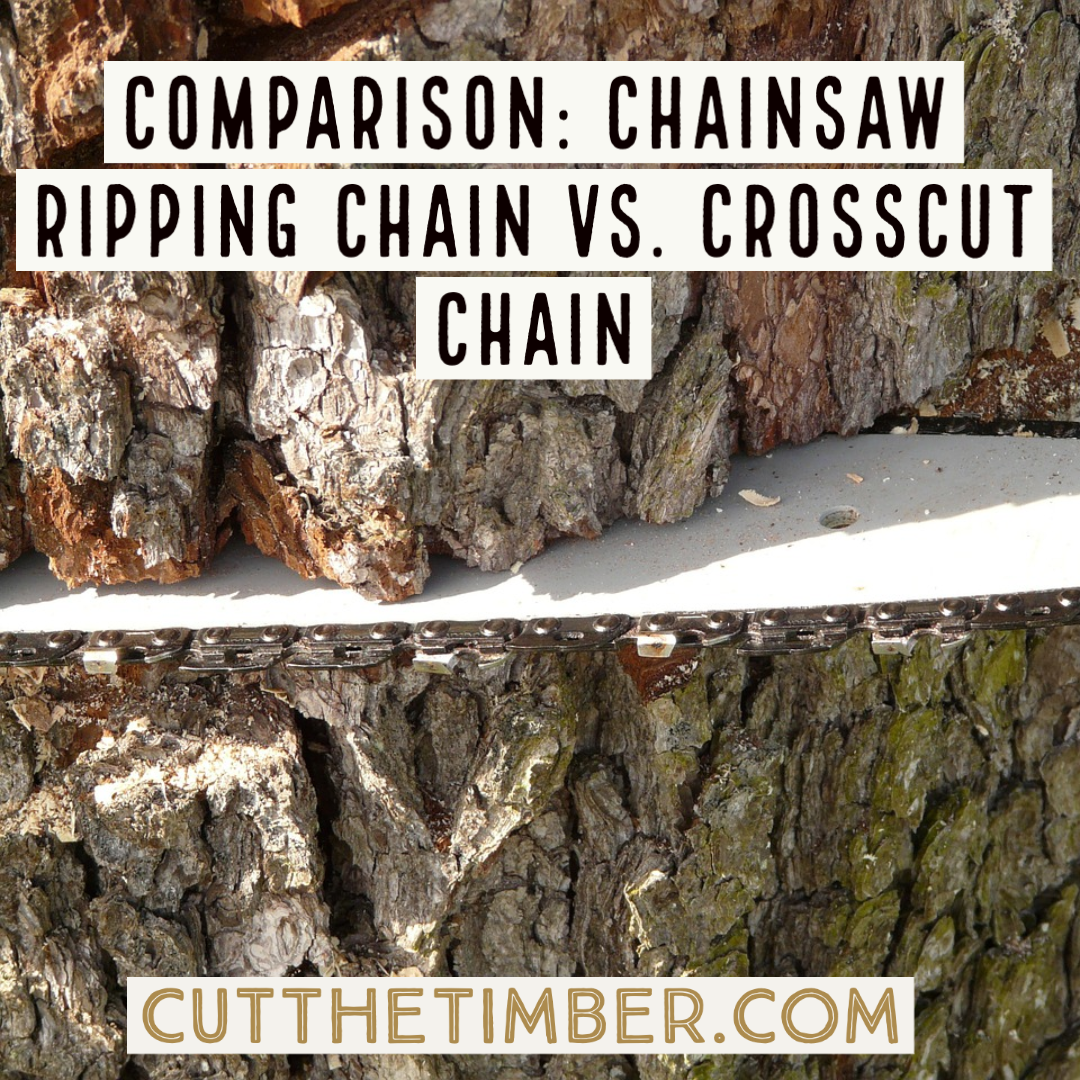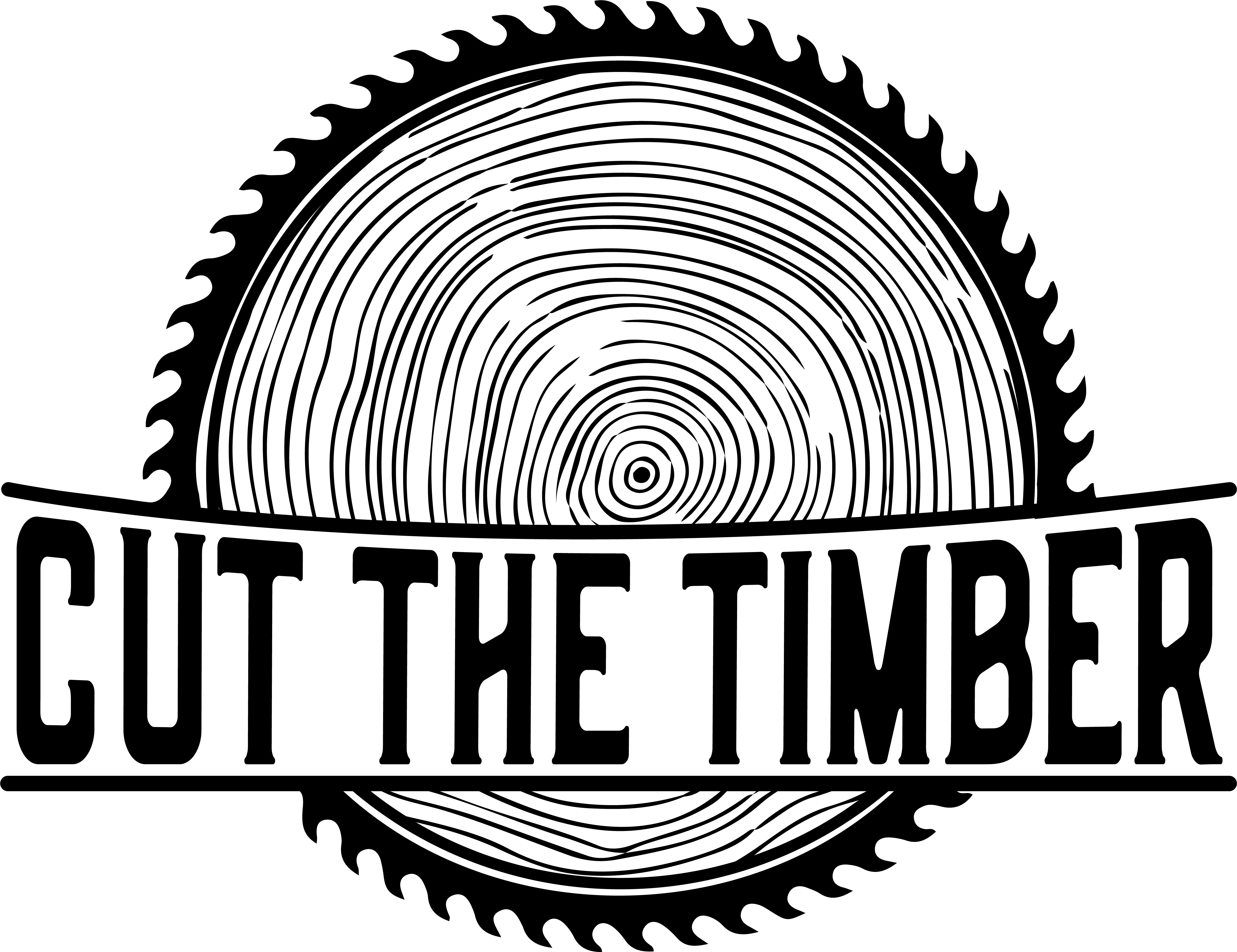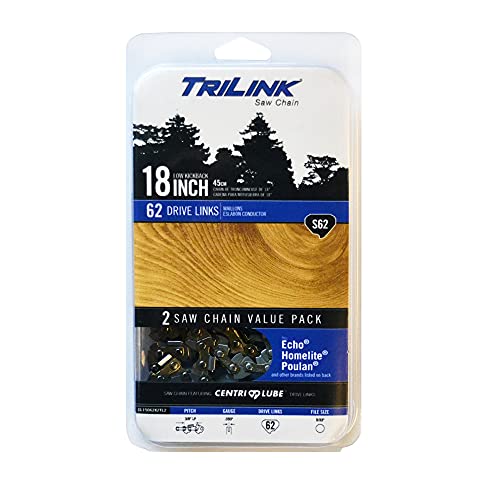Chainsaws are vital to maintaining the high quality of everyday work of both professional and amateur arborists. It also goes without saying that the chain would also play a big part in both the quality and speed of your work.
When comparing between ripping chain vs. crosscut chain, woodworkers need to know the best way to use each one, as well as their advantages and disadvantages.
Ripping Chain vs. Crosscut Chain: Overview

Let’s start by learning more about each type of chain.
Ripping Chain
Ripping chains are semi-chisel types of chainsaw chains. Having that semi-chisel design maintains the chain’s durability and keeps it sharper for longer. This boosts productivity and provides high-quality work.
They’re best used for milling, and with special projects that require a smooth wood surface. Ripping chains are known for along the pores of the wood, and not against the grain. They’re the best option for a smooth, high-quality finish.
These types of chains are great for shallow angles, at around an angle of 10 degrees. Their design makes them more efficient. It also reduces the feeding pressure on the chains, which means your chainsaw will use less power.
It’s designed to last longer and not get damaged easily. It’s a great way to save money on maintenance and replacements.
They also have one major drawback you should watch out for. They’re not fast. Ripping chains require more time than traditional cutting. If you need speed for a particular job, then ripping chains will only slow you down.
The Oregon Chain, WoodlandPro, and the Archer Chain are three great examples of fortified ripping chains.
Oregon Chain
Overall Rating: 4.4/5
Overall Rating: 3.4/5
Overall Rating: 4.6/5
Pros
Cons
Crosscut Chain
Crosscut chains are available in both full-chisel and semi-chisel. They’re best used for harsher cuttings at steep angles that range between 25 and 35 degrees.
Ideal for numerous applications, these chains can handle steeper cutting angles with greater ease. This makes it easy to cut various types of woods for several tasks without having to stop to change the chain.
Crosscut chains are known for their rough finishes, but they work faster than ripping chains. They cut through wood veins without a problem.
Crosscuts are also proficient when it comes to cutting through natural wood fibers.
While they provide many advantages, crosscut chains also have their drawbacks. They don’t provide a smooth finish.
After using a crosscut chain, you’ll need to spend time sanding and smoothing your finished product to give it a high-quality finish.
Crosscuts are exposed to more wear and tear than ripping chains. They need to be replaced on a regular basis, depending on the frequency and type of work it does.
Different Types of Crosscut Chain Styles
There are two main types of crosscut chains. They depend on the size and shape of the drive teeth.
Round Teeth
This type of crosscut has rounded teeth, or links, on the underside. The teeth curve over the top of the chain.
Square Teeth
Also known as the flat-top drive teeth, or chisel teeth. This kind is square, with a flat top and a flat back.
The best types are the Oregon D72 AdvanceCut, the Trilink, and the KAKEI chains.
Overall Rating: 4.5/5
Overall Rating: 5/5
Pros
Cons
Ripping Chain vs. Crosscut Chain: Main Features
Find out more about each chain’s basic features and functions.
Usage
Ripping chains operate at shallow angles. This feature limits their usage to only specific jobs. They’re best used for wood-cutting projects that require a steady hand and a smooth finish, such as planks or wood boards. They’re also ideal for milling.
Crosscut chains are more versatile. One feature that boosts their versatility is that they have a steeper cutting angle. This makes them efficient at cutting through almost all kinds of woods.
Speed
The ripping chain likes to work slow and steady. This slow speed ensures a finer cut and a smoother finish. It’s ideal for jobs that don’t need to be quickly completed.
The crosscut chain is fast and rough. Since it can cut through natural fibers, veins, and pores, it doesn’t take the time to slow down.
It doesn’t worry about how clean the cut is. This feature makes it great for quick jobs that don’t need a smooth finish.
Finishing
Because it doesn’t cut against the pores of the grain, ripping chains offer a cleaner, smoother finish. This makes them an ideal choice for projects where a smooth wood finish is required.
Crosscut chains don’t pay attention to giving a smooth finish. They aim at cutting quickly through almost all types of wood with efficiency and precision.
Durability
Taking care of your chains will make them last longer. Proper cleaning and storage are vital. But if you take care of them, they won’t need to be replaced for at least 2 or 3 years.
Several factors affect your chain’s longevity, such as:
- Time the chain has spent cutting up wood
- Average hardness of the wood that the chain normally cuts
- Sap in uncured pines can cover the chain
- Presence of gravel or pebbles in the bark
Ripping chains are more resistant to damage. The way their drive links are designed, and the types of tasks they perform, make them less susceptible to frequent breaking and replacement.
Crosscut chains get damaged more easily because they’re used more frequently. They also cut through different kinds of wood at great speeds, which makes them more prone to breaking.
Overall Rating: 4.5/5
A Final Note
Comparing chainsaw ripping chain vs. crosscut chain is easy, once you know which chain is best for which task. You have to consider all the features and functionalities, as well as all the pros and cons of each type.
The ripping chain is ideal for smooth and slow finishes on your projects. It’s best used to making boards and planks from large pieces of timber.
The crosscut chain is better used when more challenging cuttings are required. While it doesn’t offer a smooth and clean-cut, it does get the job done quickly.




